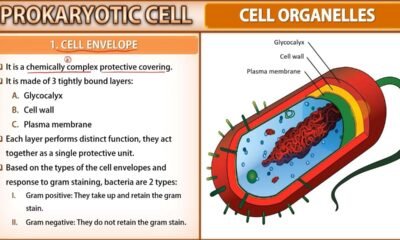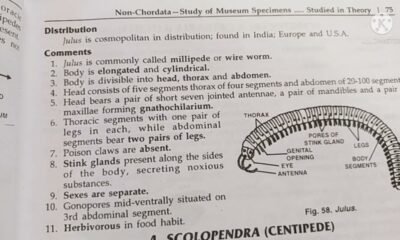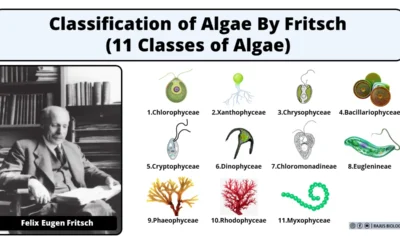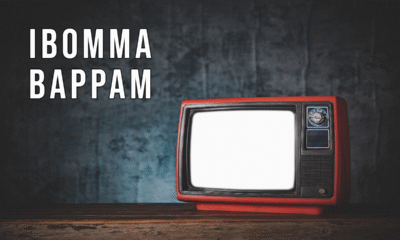Blog
Design Logos That Whisper Secrets: Hidden Symbols You Never Noticed
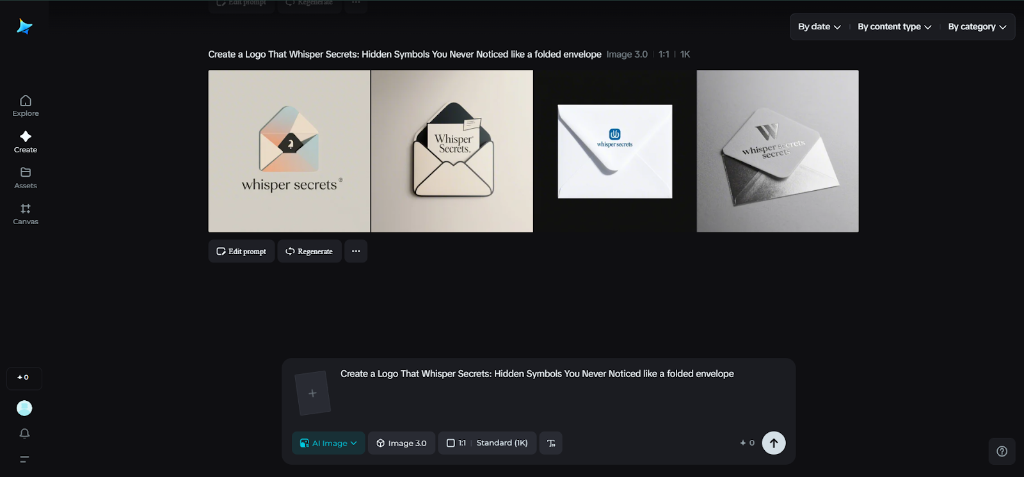
There’s a small, guilty pleasure designers share: spotting a tiny wink tucked inside a mark—a negative-space arrow, a folded letter, a sunrise hiding between strokes.
Those quiet moments make a logo feel alive, like a secret handshake between maker and viewer. If you want to test this feeling before you start sketching, try generating a mood plate with Dreamina’s AI photo generator: feed it a few sensory cues (paper grain, soft shadow, a carved emblem) and you’ll get visuals that show how subtlety reads at different scales. That image primes your eye for the kinds of whispers we’re about to unpack.
This blog is for curious designers, brand builders, and anyone who likes the idea that identity can be generous and sly at once. We’ll snoop through the categories of hidden cues, sketch some playful exercises to invent your own, and finish with a short Dreamina workflow to help you turn a whispered idea into a polished mockup. Expect concise paragraphs, a few practical bullets, and creative prompts you can try right away.
What a whisper actually does
A whisper in a logo does three things subtly: it rewards attention, it deepens meaning, and it multiplies touchpoints. A viewer who notices the secret feels clever; a client who uses the story gains narrative fuel for marketing; and a mark that reads on many levels becomes more memorable. But the whisper must be honest—tacked-on cleverness reads as cheap. The best hidden symbols feel inevitable, like the mark would be awkward without them.
Little categories of hidden meaning
Hidden cues come in flavors. Here are the ones I use when inventing mysterious marks:
- Negative-space reveals: compositions where the “empty” region forms a symbol—a path, a face, a compass—that complements the positive form.
- Glyph fusion: two letters or icons share strokes so a viewer can parse both at once (think of a monogram that is also a tiny map).
- Micro-patterns: repeating microscopic elements inside a letterform—dots that become a texture up close and a solid tone at distance.
- Contextual lockups: marks that change when paired with an object—an emblem that gains a crown when used on premium packaging, or a wordmark that gains a smile when on staff badges.
These are tools, not rules. Use one or two, not all at once.
How to invent a whisper (a five-minute warmup)
Warmups get you into the whisper-hunting mood quickly. Try this micro-exercise: take a simple word—”harbor” or “loom”—and list three meanings beyond the literal (harbor = shelter, commerce, tide). Sketch the word as a few rough letterforms. Now, force one non-literal meaning into the negative space of a single letter. Don’t polish—this is about discovery. Often, the first awkward attempts reveal the best directions.
Practical constraints that sharpen mystery
Whispers fail when they sabotage legibility, break at small sizes, or require obscure cultural knowledge. Keep constraints practical:
- Design the whisper to survive down to 16px; if it disappears entirely at favicon size, it shouldn’t be relied on for core meaning.
- Avoid references that require specialist knowledge unless your audience is specialists. A secret that only you understand is just a private joke.
- Test the mark in real use: signage, social avatar, embossing. The whisper should surprise, not confuse.
These constraints force you to make wit servant to function.
Dreamina’s three-step process for logos that whisper and giggle
Step 1: Write a descriptive text prompt
Go to Dreamina’s AI image and create a detailed prompt that states the mark, what you want it to whisper, and the materials you would like to experiment with.
For instance: Design three concept lockups for neighborhood bakery “Low & Crust”: one that incorporates a small wheat ear in the negative of the ‘o’, one that combines ‘L’ and ‘C’ into a monogram, and a third that illustrates how the emblem embosses onto kraft paper.
Be specific about mood, material, and the type of reveal you envision.
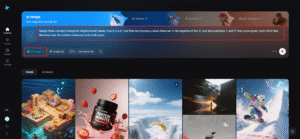
Step 2: Tailor parameters and generate
Select a model typographically and emblem-driven, adjust the aspect ratio appropriate for marks (square or barely horizontal), select size, and determine if you require rapid sketches (1k) or more detail for client approval (2k). Click on Dreamina’s icon to create a variety of variations; compare them not only for appearance but for how well the whisper lettering reads at various sizes.
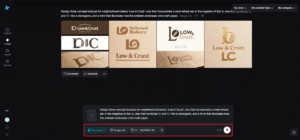
Step 3: Refine and download
Refine a solid idea with Dreamina’s tools—smooth the negative-space curve, expand the mockup to reveal emboss or foil, remove unnecessary texture that distracts, and retouch contrast so the whisper makes it through small-scale reproduction. Once the mark is functioning as you want, click the Download button to export assets for future vector work and presentation.
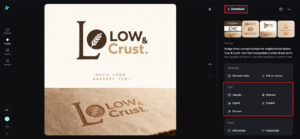
Teamwork and storytelling: how to sell a secret
Clients sometimes fear subtlety because they want instant recognition. The fix is packaging: give the whisper a story and a ritual. Provide a short, shareable line for marketing teams (“look closely and you’ll find a path between the letters”) and a tiny animated reveal for digital use—something that shows the whisper unmasking itself in a hero frame. That way, the brand can both reward slow readers and shout its cleverness when needed.
Low-cost ways to prototype hidden symbols
Experiment without committing production budget. Try:
- Print a single card with the mark at three sizes and hand it to the person who knows you least; if they smile or ask a question, you’re onto something.
- Animating the negative-space reveal with a two-frame GIF to see whether motion strengthens recognition.
- Embossing a thumb-sized test on paper to check tactile legibility.
These rapid tests save time and reveal whether your secret reads as charm or as a cryptic mess.
Micro-collections of whispers: pattern-level Easter eggs
A whisper can be a motif that runs through brand collateral. Create a set of micro-icons that share a hidden element—a leaf shape tucked into each icon’s corner, for instance. Use them as binder tabs, social stamps, or sticker backs. Repeated exposure lets the secret unfold over time; stringing these motifs into a “treasure hunt” across a website or a printed brochure turns discovery into engagement.
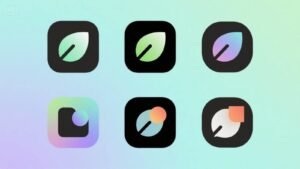
Texture, material, and whisper behavior
Materials change how secrets behave. Embossing reveals by shadow; foiling hides and then flashes in the light; matte surfaces can conceal micro-patterns that only a macro lens discovers. When choosing materials, think of the whisper’s life: do you want it to be tactile and private (emboss), or momentarily showy (foil)? Tactility can be the quietest form of storytelling.
Using tools to imagine subtlety
If you’re stuck on how a whispered idea will read, iterate with image tools before you vectorize. A short run through an AI logo generator (for exploratory lockups) can produce unexpected glyph pairings to inspire negative-space solutions.
For richer texture studies—foil, emboss, pattern—try a free AI art generator to mock up material treatments fast. These are concepting aids, not final outputs; they help you argue for a design internally before committing to a full identity system.
Small ethical notes about secrets and transparency
Whispers are delightful, but don’t weaponize subtlety to obscure important information. If your brand uses a secret mark that affects consumer perception (pricing tiers hidden in patterns, for example), be transparent elsewhere. Secrets should be emotional and narrative, not transactional.
Quick checklist before you ship a whisper
- Legibility at favicon and signage size
- Clear story for marketing or packaging teams
- Material mockups for emboss/foil/print
- Simple animation to reveal the secret on digital platforms
Running this checklist stops charming ideas from becoming frustrating real-world problems.
Closing: practice listening, then whispering
Designing whispers is an exercise in restraint and generosity: choose one small secret and make it earn its place. Dreamina helps you prototype quietly—moodplates, material studies, and concept lockups—so you can show stakeholders what subtlety actually does.
When the mark finally slips its secret into a viewer’s eye, it’s one of the small delights branding still gets to offer: proof that care and craft were at work. Run the prompts, polish the lockups, download your mockups, and then watch people notice.

 Blog6 months ago
Blog6 months ago[PPT] Human Reproduction Class 12 Notes

 Blog6 months ago
Blog6 months agoCell The Unit of Life Complete Notes | Class 11 & NEET Free Notes
- Blog6 months ago
Contribution of Indian Phycologists (4 Famous Algologist)
- Blog6 months ago
PG TRB Botany Study Material PDF Free Download

 Blog6 months ago
Blog6 months ago[PPT] The living world Class 11 Notes

 Blog6 months ago
Blog6 months agoJulus General Characteristics | Free Biology Notes

 Blog6 months ago
Blog6 months agoClassification of Algae By Fritsch (11 Classes of Algae)

 Entertainment6 months ago
Entertainment6 months agoIbomma Bappam: Redefines Telugu Streaming Trend






